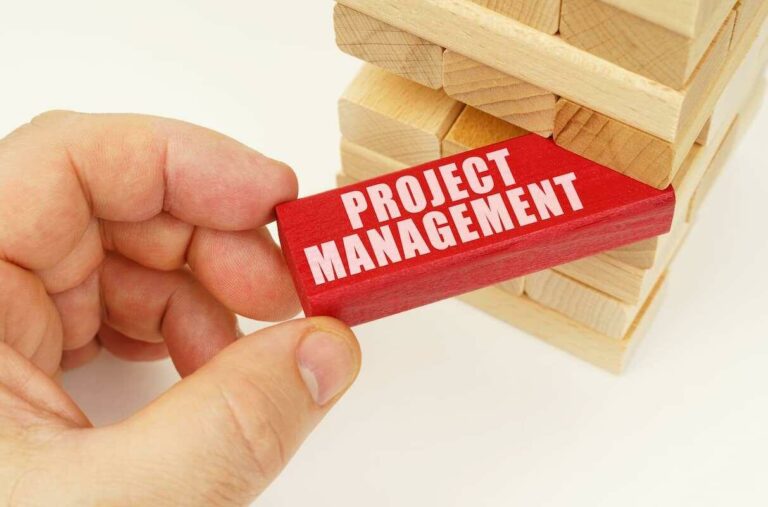Content
- How does the Scrum Master serve Product Owner, Development Team and Organization?
- Focusing on the Right Stories
- The DEEP Qualities of a Product Backlog
- Detailed Appropriately
- Get Construction Dive in your inbox
- A DEEP Backlog is a Healthy Backlog
- DEEP Product Backlog
- Achieve a DEEP product backlog with Easy Agile
But first, let’s get on the same page about product backlogs and the refinement process. A product backlog captures the details about all we are planning to do, to achieve our vision. It is a prioritized list of everything that is deemed necessary related to required initiatives, projects and even the smaller things like requests and tech debt. This estimation unit should account for complexity, uncertainty, risk, and effort. When selecting an agile estimation technique, the development team should pick one that resonates with them.
It discourages the “kid-in-a-candy-shop” behavior when the business side clamors that everything is of high-priority or of equal importance. This estimation can be done by comparing relative sizes of large epics. Maintaining the product backlog is the primary responsibility of the product owner or product manager. Part of that process involves refining details and estimates and prioritizing items. The Product Backlog lists all features, functions, requirements, enhancements, and fixes that needs to be developed for the product release.
Existing items are reprioritized, modified, refined or removed – continually. I hope you find the statement “Product backlog is DEEP; INVEST wisely and DIVE carefully” a useful mnemonic to remember key characteristics of a well-managed product backlog. Mike Cohn specializes in helping companies adopt and improve their use of agile processes and techniques to build extremely high-performance teams. He is the author of User Stories Applied for Agile Software Development, Agile Estimating and Planning, and Succeeding with Agile as well as the Better User Stories video course. Mike is a founding member of the Agile Alliance and Scrum Alliance and can be reached at If you want to succeed with agile, you can also have Mike email you a short tip each week. Let’s examine what each of the four key attributes of a good product backlog entails.
The individual teams attempted to follow an agile process, but leadership wanted to manage the program using a traditional methodology. Every week we’d review the project plan, and every week we shifted dates. A Product Backlog is emergent when we accept that items will change over time and develop processes that do not deter the creation, elaboration, or removal of items on the backlog. As the project progresses, more and more information and knowledge are obtained, and the user stories in the product Backlog are also added, removed, or rearranged. Changes in business requirements, market conditions, or technology may cause changes in the Product Backlog.
This can cause a messy and chaotic backlog with many outdated items. Nothing gets done unless it’s on the backlog, but simply listing an item doesn’t guarantee that it will be accomplished. Product backlog refinement is the process of selecting which tasks backlog refinement techniques are the most relevant to work on next – so you’re only working on what matters. Some people feel that grooming backlogs once a sprint is essential for productivity. Hence, they remember what was decided from gathering all tasks for the next sprint!
How does the Scrum Master serve Product Owner, Development Team and Organization?
Backlog grooming allows the manager to ensure appropriate items on their backlog list and listed in order of priority. Here are some handy tips or best practices required to maintain a healthy backlog. The consensus is that the ideal length for a backlog grooming session is between 45 minutes to an hour, depending on the team’s availability. The most important thing about identifying a Product Backlog Grooming facilitator is ensuring they have the right skills and experience to perform the role at hand. Moreover, the facilitator ensures that the sessions are regularly scheduled, the right people are invited, and follow-up communication is sent out to the team after the session concludes. A DEEP Backlog is one of the proposed targets of a grooming session for a product backlog.

Make a note of which ones are high or low priority and which bugs need fixing. Have your team label the Backlog items according to the work required. It keeps moving from idea to completed work and adapts to changing customer needs. Detailed appropriately- This means that higher priority items should have more detail than lower priority ones. Which to me is a long way from marking up stories into an overall MVP or Release. Emergent – Product backlog is organic; it constantly evolves, changing frequently as new items are discovered and added based on user and customer feedback.
A backlog should have clear implementation timelines for the various efforts/initiatives to address product deficiencies. One thing is for sure that the Product Backlog Refinement meetings are not meant for chitchat or time pass. Neither should the sessions be for getting clarity on other inter-team issues. Note that epics and stories are conceptually different, and should not be mixed or aggregated while developing a rank order. Stories are independent; they offer distinctly different functionality and don’t overlap.
Focusing on the Right Stories
Product backlog management is the most impactful work area for any product manager. Learn how to create a healthy backlog and apply a data-driven approach to prioritization. Over the time horizon of multiple release cycles, INVESTing in stories has even poorer returns compared to INVESTing in stories for a single release cycle. This kind of INVESTment will not yield expected results as stories are very likely to change over a much longer duration of multiple release cycles. It still makes sense to rank order feature-epics in a release cycle to decide which ones will be scheduled in sprint one, two, three, and so on.
- Product backlog management is the most impactful work area for any product manager.
- We may not be wrong to say that product professionals create backlogs that are estimated and prioritized in most cases.
- However, sometimes certain implementation-level dependencies may be unavoidable.
- As we all know, backlog refinement is crucial in ensuring that your product backlog has everything it needs.
- Prioritize– The product backlog should be ordered from high to low, from the most valuable items at its top to the least valuable at its bottom.
It continuously evolves as the product and the project environment evolves. Requirements of a project is never stop changing, so a Product Backlog serves as a living Scrum artifact. And unless you have a polished backlog, your mission guide will get you no further than the first page of your backlog. We hope the backlog refinement tips shared in this blog helped you answer that question. Teams should make an effort to make sure the priority items remain the most important.
The DEEP Qualities of a Product Backlog
Everyone wants to achieve their goals, but nothing gets done if you don’t take any action towards them. So, here’s a checklist that will help you track your progress and keep your backlog in check. Once the team has prioritized their Product Backlog, they should start at the top of the list and work down.

It’s constantly changing, growing, and evolving as you plan and build. Agile Product Backlog Grooming, also known as product backlog refinement, is an activity that helps you to improve your product backlog continuously. If you have five tasks, each task on an average should take four hours of ideal time effort or less. The granularity or size of work items should be determined based on how far into the future you are planning a product, i.e., the planning horizon. The longer or shorter the planning horizon, the larger or smaller the work items.
Detailed Appropriately
Estimates for higher-priority items or items at the top of the backlog need to be more accurate. We can afford to be less precise with lower-priority items because they are assumed not well understood yet. Estimates are not final and often expressed in story points or ideal days . Knowing the size of the items helps prioritizing and planning the release.
Smaller work items, stories, are typically developed by breaking down larger work items, or epics. Stories are the unit of software design, development, and value delivery. On the other hand, items that are lower on the priority list don’t require nearly as much detail. It’s a poor use of time to add details to lower priority items since you never know how the backlog is going to evolve.
Items at the top are a higher priority, and items toward the bottom are a lower priority. When deciding which items should be prioritized, consider the value each item will provide. Ordering backlog items to deliver the most impact over the next sprint. Adding detail https://globalcloudteam.com/ to high-priority backlog items for greater comprehension. The Scrum product backlog represents a small subset of the overall product backlog. The product backlog is the entire bottle of wine, while the sprint backlog is the glass of wine you’re going to tackle next.
This is an ongoing activity to add details, such as a description, order, and size. The key characteristics of a well-organized and managed product backlog are summarized in the image below. They can be used as very useful acronyms to help us remember the key characteristics. In this blog, I will explain how to manage a DEEP product backlog well by INVESTing wisely and DIVing carefully. User stories on the product backlog that will be done soon need to be sufficiently well understood that they can be completed in the coming sprint.
A groomed backlog helps you not get overwhelmed by the number of incomplete tasks. It forces teams to deliver their product more rapidly and ensures the organization is moving forward on schedule. A well-groomed backlog reduces the time spent on planning sprints and increases the productivity of everyone involved in building the product. The most popular and an important artifact in Scrum, the product backlog is never complete. It is ever evolving, as a project’s requirements or environment evolves and changes.
Get Construction Dive in your inbox
I weighed my choices as I stared at the due dates for the twenty assignments. Product backlogs are discussed in much more detail in Succeeding with Agile. In his book Agile Product Management with Scrum, Roman Pichler points out that the Product Backlog needs regular attention. The key to a healthy Product Backlog is to perform refinement regularly. The Big Design Up Front approach claims we can predict all outcomes, plan contingencies, and execute perfectly. Traditional project management has given scope creep a bad name.
A DEEP Backlog is a Healthy Backlog
Regular backlog grooming sessions help ensure prioritizing the right stories and that the product backlog does not become a black hole. Product backlog refinement is one of the most critical meetings in an agile project. This is where one makes sure that the product backlog items are built. It’s the place where the product owner and the team collaborate to understand the requirements, estimate the product backlog items, and fill up the release.
The product backlog should be sorted with the most valuable items at the top and the least valuable at the bottom. The product backlog is often called a “living artifact” since it is in constant evolution, changing and adapting based on the current needs of stakeholders, customers, and the market. To keep a backlog up-to-date and in its most effective form, it needs to be continuously managed, refined, and adapted. The purpose of refinement is to ensure that the continuity between user expectation and market feedback and project deliverance is always maintained.
Achieve a DEEP product backlog with Easy Agile
It’s best to put aside an excessively detailed product backlog handed down to us and develop a fresh one from the roadmap based on the DEEP principles. Items may need to be added, re-prioritized, or removed altogether. The Product Owner will naturally let lower priority items fall to the bottom of the list as they focus on getting clarity around near-term Product Backlog Items at the top.


